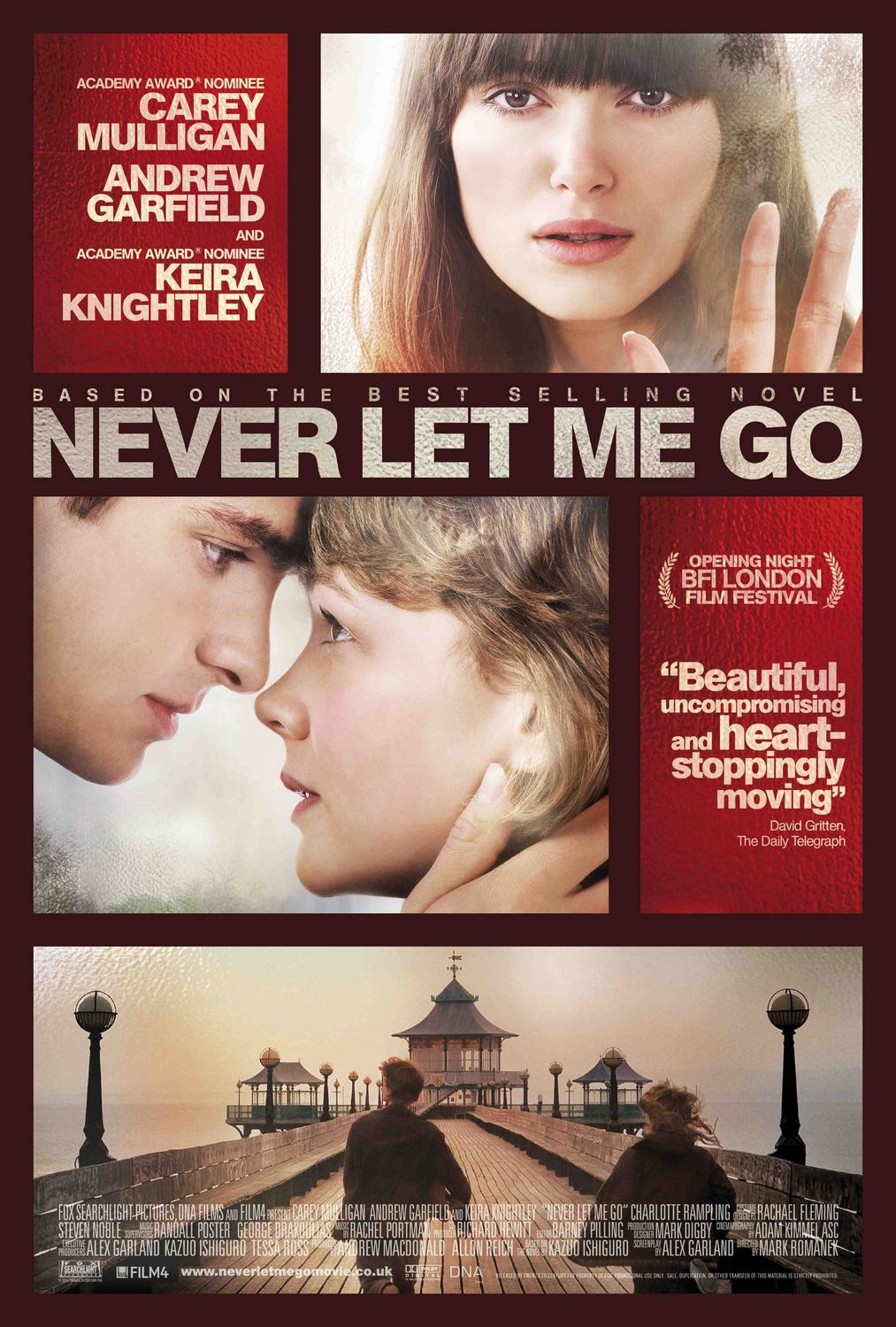Never Let Me Go (released 2010) is in the science fiction dystopia category. Whilst that’s true, that description does not convey its spirit or its intent.
Alex Garland displayed great skill in adapting his screenplay from Kazuo Ishiguro’s novel. The story is set in the 1970s in England, but with an imagined medical ‘success’ having taken place in the 1950s.
We enter the world of Hailsham House, an exclusive boarding school, where Tommy, Ruth and Kathy are friends. Tommy, a naïve boy struggling to fit in, is manipulated by Ruth into being with her, rather than Kathy whom he is really drawn to. In this first part, three young talented actors play these main characters, whose teenage and adult lives are portrayed by Andrew Garfield (Tommy), Keira Knightley (Ruth), and Carey Mulligan (Kathy).
Great emphasis is put on the students maintaining a healthy lifestyle, and producing artwork is given greater importance than academic subjects. A mystery surrounds the purpose of The Gallery, where much of this artwork is sent. Everyone knows that students from Hailsham House are ‘special’. A new teacher reveals that the students have one sole purpose in life. They have been cloned for organ harvesting, and their organs will be donated to members of the ‘ordinary population’ in order to extend their lives. Whilst still young adults, they’re destined to make their final donation and die, no one having survived their third donation.
When Tommy, Ruth and Kathy leave the confines of school, we see their inevitable future come to pass. There is no rebellion or attempts to run away. If the story had gone down that route, it would have suffered for it. Their responses are much more subtle than that. They try to stall the inevitable but that is all. In the end there is acceptance, albeit of the most melancholy kind.
This is not a political movie. It’s stripped down to basic human emotions and explores how we deal with the idea of mortality and our place in time. Cloning is an elegant plot device enabling these questions to be posed: what is a soul, and what does it mean to be human?
As Tommy and Kathy finally have the relationship they should have had years before, being in love could be significant in terms of their soon-to-be organ donations. Rumors have always persisted that couples that could prove they were genuinely in love could be granted extra years of life before they were required to donate. Tommy theorizes that this is in connection to the artwork the students produce, and he thinks he has unlocked the secret of The Gallery. Tommy invests all his hope in his drawings, which he shows to his former teachers. He has to hope because hope is all he has. Trying to show that their love is ‘verifiable’ through the outpourings of his soul is a heartbreaking scene.
Muted colors give the film a period feel, and the cinematography for scenes shot on location at the coast are stunning. Its slow pace actually empathizes with a short life in a strange way. Like the characters, we, the audience, want to cling on as long as possible.
The three main leads are extremely impressive, but Andrew Garfield’s immersive performance particularly so – in fact, it’s quite astonishing.
Never Let Me Go’s triumph is in telling a desperately sad story, but also celebrating the human spirit. In the end, all we have is hope and love. And that’s what it means to be human.

